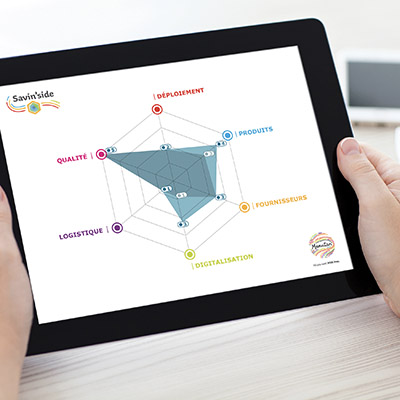Expenditure analysis involves processing a small amount of relevant procurement data in order to learn from it and thereby improve operations. It should be carried out in the context of a clear, shared procurement strategy.
This is why a meaningful expenditure analysis must follow a strict methodology, organised into three steps:
- Collecting a selection of relevant data
- Formalising priority actions
- Sharing operational objectives with all stakeholders
Collect relevant data to inform the expenditure analysis
Most procurement departments have a system—some more sophisticated than others—in place for collecting data:
- Supplier data
- Actual consumption data for supplies and equipment
- Procurement performance data
The aim of an expenditure analysis is to improve the company's overall performance. With this in mind, the challenge for the first step is to begin by identifying data that will be useful for the analysis, and to not waste time and energy by collecting unusable data.
The aim of this step is therefore to establish a small number of measurements that procurement departments can focus on and that can form the basis of the analytical documentation. Procurement teams must draw on their intuition and experience when choosing their data.
Identify clear priorities based on the expenditure analysis
The second step of the expenditure analysis aims to prioritise actions. This means focusing on the most obvious areas for improvement.
The expenditure analysis is only understood from a results perspective, and is intended to scale back costs with no added value. For this reason, as the second step, the expenditure analysis aims to produce recommended actions that are both concise and meaningful.
It is on the basis of this report that procurement departments will be able to convince stakeholders to change their vision and/or practices, starting with general management.
The wider topics around which to create recommended actions could be, for example:
- Reducing the number of suppliers and purchasing in bulk
- Reorganising delivery rounds
- Installing a vending machine for certain supplies, such as personal protective equipment
- Digitalising the ordering process
Achieving these aims means involvement beyond the procurement department. What these suggestions have in common is that they require internal customers to adapt. This is why recommendations from the expenditure analysis must be persuasive by being concise and by using indisputable data.
Share the expenditure analysis with other departments
As well as convincing stakeholders and guiding them to consider changing their practices, the expenditure analysis must lead them to take concrete actions. The aim of the third step in this approach is to agree a clear plan to implement these actions with internal stakeholders.
For example:
- Vending machines: OK, but where and with what inside?
- Digitalising the ordering process: Based on which scenario for selection, purchase requests and validation?
- Which products should be bought in bulk and from which suppliers?
An intermediate step towards convincing internal customers that these changes will improve collective performance could be to share indicators that relate to common objectives.
For example, to reach critical mass without causing disruption, analysing purchases could pave the way for some common-sense commitments:
- Reducing the number of orders for the same product in a year
- Reducing inventory levels on products that are easy to purchase and have a low turnover rate
- Gradually reducing the range of products by product line
In conclusion, analysing expenditure is only beneficial if we know what we are looking to achieve and if we have the means to take concrete action. For this reason, adopting a procedure that is geared towards producing tangible results is essential.
Expenditure analysis is part of a broader data valuation strategy, for identifying sources of innovation or trying to optimise the supply chain for instance. To find out more on the topic of procurement data analysis, take a look at the article written by Xavier Laurent, Manutan's Director of Value-Added Services: External data: The key to helping buyers stay ahead of the game.








